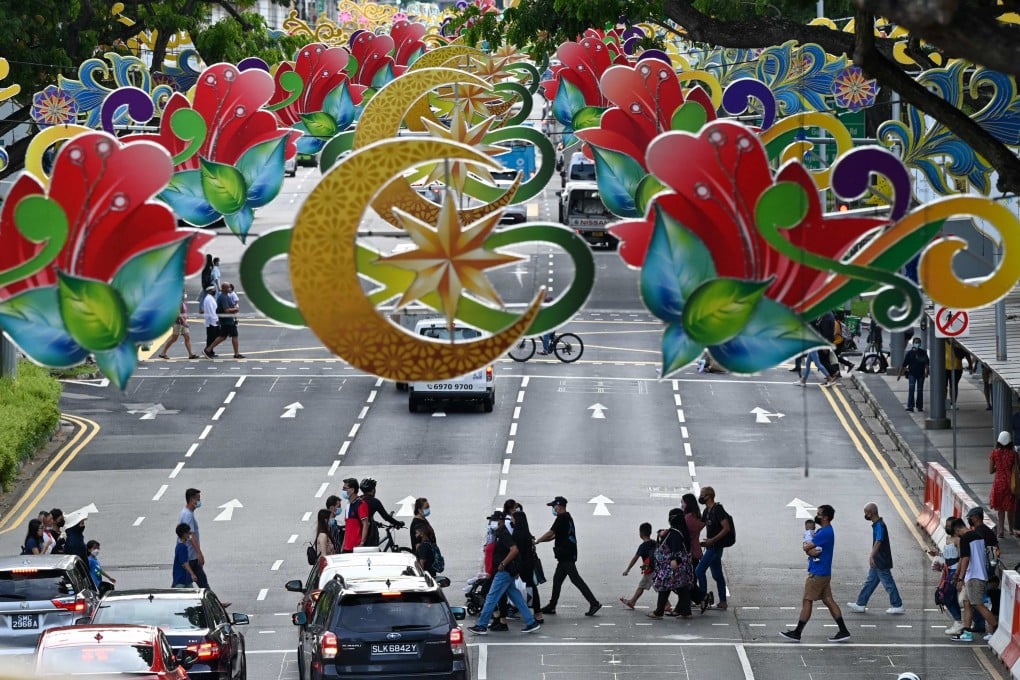‘Lively and special’: Singapore’s Muslims cheer first Eid without Covid curbing festivities
- Mosques are once again bustling and family gatherings have returned at full scale for this year’s Hari Raya Aidilfitri, or Eid al-Fitr, in Singapore
- Last month the city state lifted social-distancing curbs and capacity limits on venues that had led to two years of smaller-scale celebrations

Roslaini Husain, 61, is excited. After two years of quieter, smaller festivities amid the pandemic, she can finally host the Eid al-Fitr celebrations that she used to, with up to 30 guests feasting on her home-cooked dishes.
The Singaporean housewife and mother of four is looking forward to welcoming her relatives and friends on Tuesday. “I have bought a lot of fresh flowers, decorated my house, put up fairy lights, put out cookies and cake,” she said. “This year we can have as many guests as we want.”
The festival is also a highlight for Bangladeshi Muslims in Singapore, who make up a sizeable proportion of the country’s more than 300,000 migrant workers.

Hari Raya means “grand day of rejoicing” in Malay, but over the past two years social-distancing curbs have muted celebrations. Singapore’s circuit-breaker lockdown in 2020 banned gatherings outright, while households were limited to just five visitors a day during last year’s festival.
